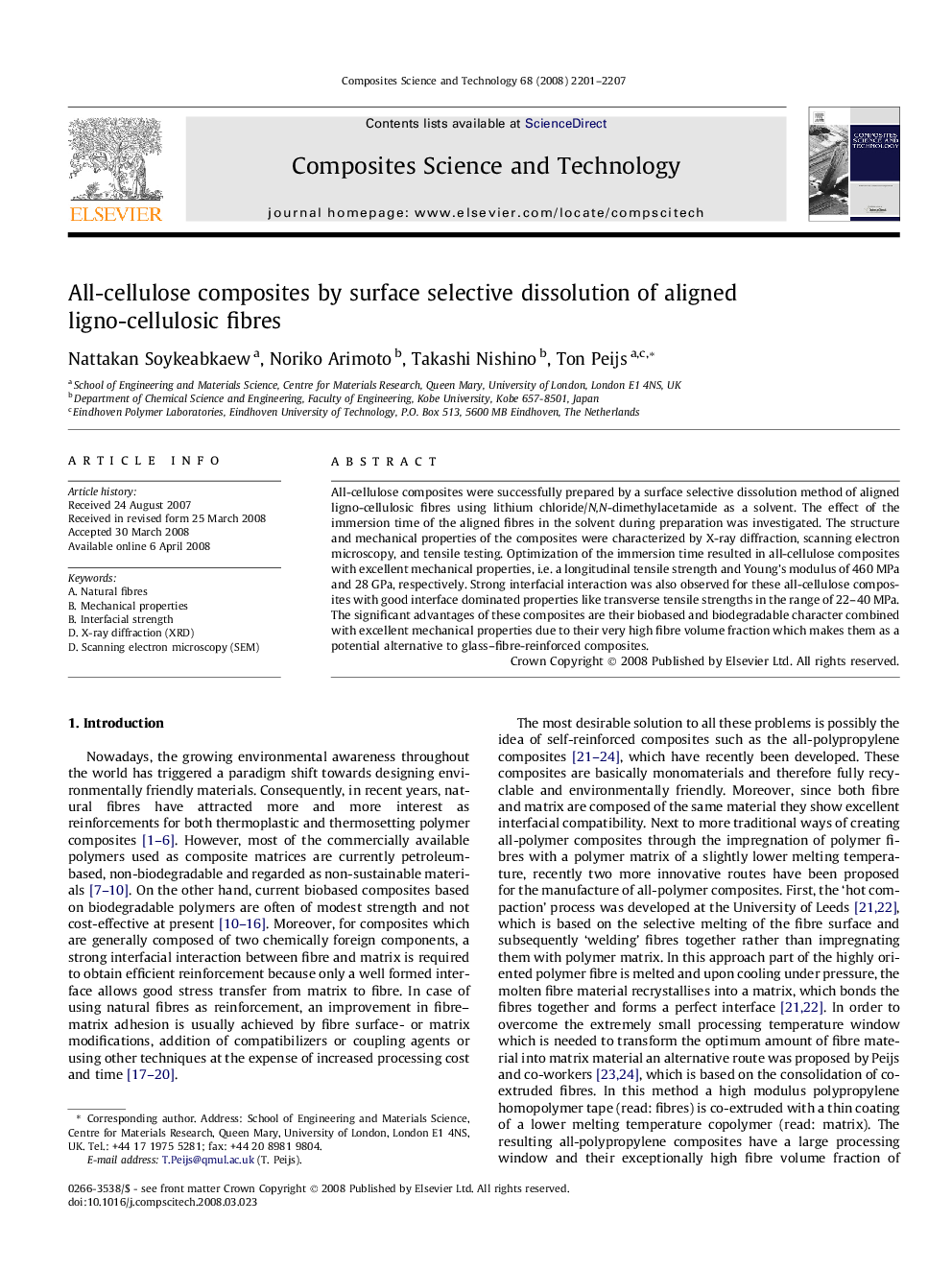| Article ID | Journal | Published Year | Pages | File Type |
|---|---|---|---|---|
| 822014 | Composites Science and Technology | 2008 | 7 Pages |
All-cellulose composites were successfully prepared by a surface selective dissolution method of aligned ligno-cellulosic fibres using lithium chloride/N,N-dimethylacetamide as a solvent. The effect of the immersion time of the aligned fibres in the solvent during preparation was investigated. The structure and mechanical properties of the composites were characterized by X-ray diffraction, scanning electron microscopy, and tensile testing. Optimization of the immersion time resulted in all-cellulose composites with excellent mechanical properties, i.e. a longitudinal tensile strength and Young’s modulus of 460 MPa and 28 GPa, respectively. Strong interfacial interaction was also observed for these all-cellulose composites with good interface dominated properties like transverse tensile strengths in the range of 22–40 MPa. The significant advantages of these composites are their biobased and biodegradable character combined with excellent mechanical properties due to their very high fibre volume fraction which makes them as a potential alternative to glass–fibre-reinforced composites.
